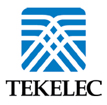|
May/June 2009 | Volume 1/Number 3
Feature Story
Tekelec’s Versatile EAGLE XG Platform for Operators
By Richard “Zippy” Grigonis
Why the XG? “Several reasons,” says de Lange. “Our customers have experienced both subscriber growth and exponential traffic usage. A common driver is the global surge in text messaging as subscribers get QWERTY keyboards on their phones. Also, much more signaling occurs in wireless networks than in fixed networks, because of such things as cell tower hand-offs and roaming. Moreover, new technology is going into networks at an increasingly rapid pace. Operators must offer seamless service interaction between 2G, 2.5G, 3G, and LTE, or between fixed and wireless or even with broadband if they adopt VoIP. That need to interoperate across operators is something we hear about all the time.” That interoperability covers intelligent network (IN) and IP network traffic to ensure interaction between SS7 and SIP-based platforms. “Operators wanted our EAGLE platform to evolve to do things such as broker between, for example, any of the four versions of the CAMEL protocol within their IN services,” says de Lange, “so that they could mix-and-match applications. A prepaid server may run on CAMEL 2 and a ringback tone server could run on CAMEL 1. Operators need their prepaid customers to be able to access and download ringtones, which requires multiple signaling triggers issued for a single user event. We enable these new service interactions and new sources of revenue for our network operator customers.” “The new EAGLE XG also does SIP interaction,” says de Lange, “so operator traffic can go back-and-forth between SIP and CAMEL 1 through 4, or INAP technology developed for fixed networks, or other SS7 signaling protocols. The EAGLE XG’s Service Broker rules-based engine enables customers and/or Tekelec to custom-configure the software so operators can set unique triggers for their particular network needs.” “Another application for the EAGLE XG is our SIP Signaling Router [SSR], a SIP Proxy,” says de Lange. “Softswitches have SIP interfaces for intra- and inter-network signaling, and service providers need to gain visibility to all SIP signaling to efficiently route network traffic. Our SSR sits in the network core just like an SS7 STP does today, and it centralizes network routing data. The benefit is efficient scaling of SIP networks, as operators won’t have to constantly maintain and scale routing data in every SIP endpoint, which would use a lot of capacity. And with a software upgrade, the SSR evolves into an IMS CSCF, for when customers decide to deploy an IMS core in their infrastructure.” Adds de Lange, “Our SSR can also provide Number Portability-corrected SIP routing and ENUM dips, and it can use LDAP and next-gen interfaces. In addition, it enables operators to simultaneously reuse their HLRs and their Tekelec number portability solution. The cumulative result of these SIP routing capabilities is a centralized session framework that increases service and network flexibility and lays a foundation for cost-effective network growth.” “The third major application is our HLR Router, which the network sees as a virtual HLR,” says de Lange. “This architecture makes all MSCs, whether they’re softswitches or circuit-switches, point to this virtual HLR, and Tekelec knows which HLR to route requests to since we know on which database their subscribers reside. The advantage is that operators can load balance or modify HLR topology without having to re-configure MSCs or other network equipment that access HLRs, such as SMSCs. They can all access the virtual HLR and we handle it from there. We’re increasing the capacity from 120 million customer entries in the EAGLE 5 to a billion in the EAGLE XG. This is driven by operators’ expectations to see continual growth in the number of 3G-enabled devices connected to their network.” “The fourth aspect of the EAGLE XG is what we call our Subscriber Routing Database,” says de Lange. “It will support a billion customer entries for various applications, including HLR router, number portability, ENUM, and other yet undefined services. Just as SIP endpoints want to gain access to SS7 databases, there are also IP, SIP or LDAP-enabled, or next-gen Web interfaces, that must access traditional SS7 or other next-generation data. The mix-and-match goes both ways.” The EAGLE XG can also run sophisticated algorithms such as load balancing, and it has a very robust, reliable and scalable network architecture. The physical architecture is also flexible, coming in either rack-mount server or blade-server configurations. In short, the EAGLE XG is a substantial new achievement by Tekelec that will give operators more life from existing technology and save costs as they evolve networks for the future. NGN Magazine Table of Contents |





 Tekelec (
Tekelec (
